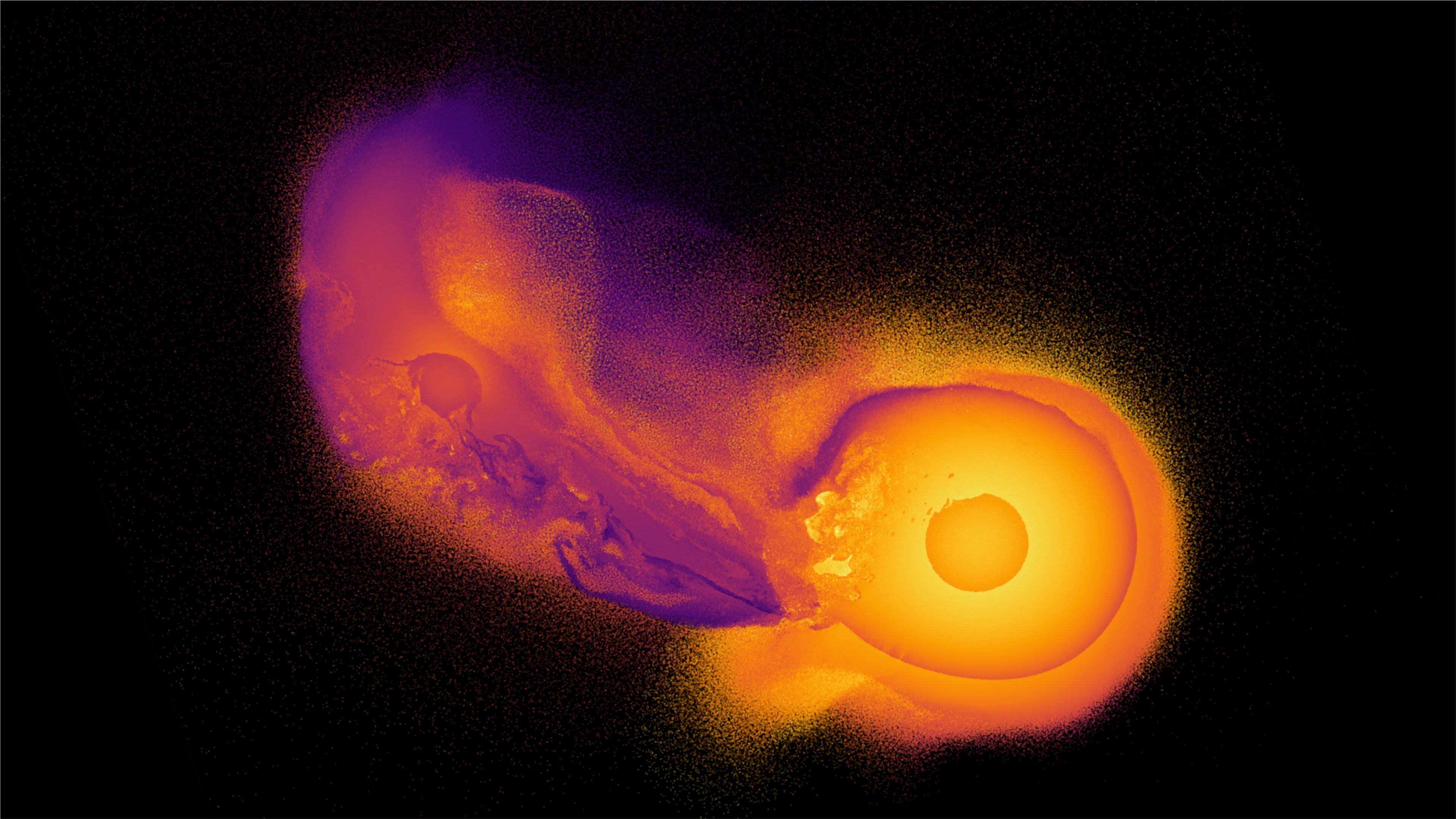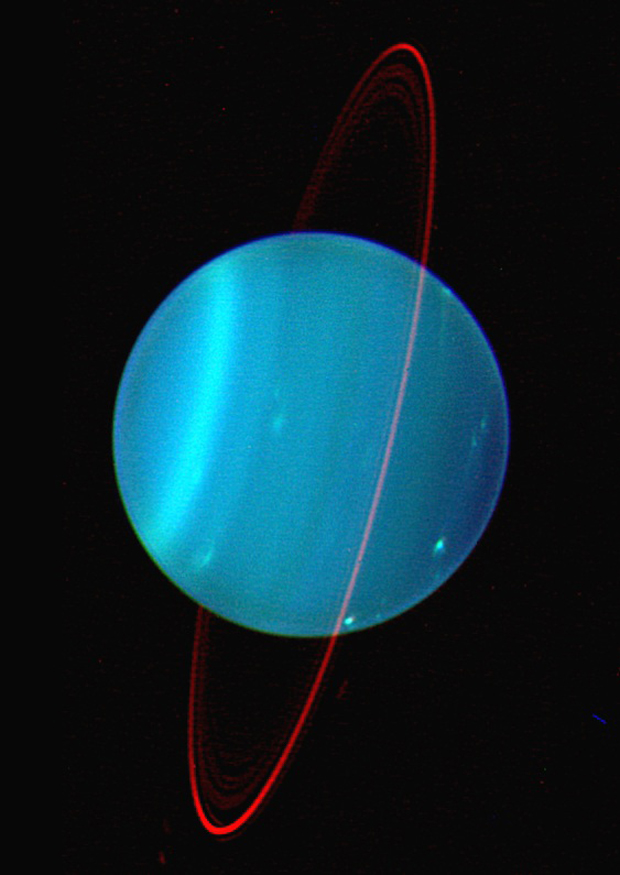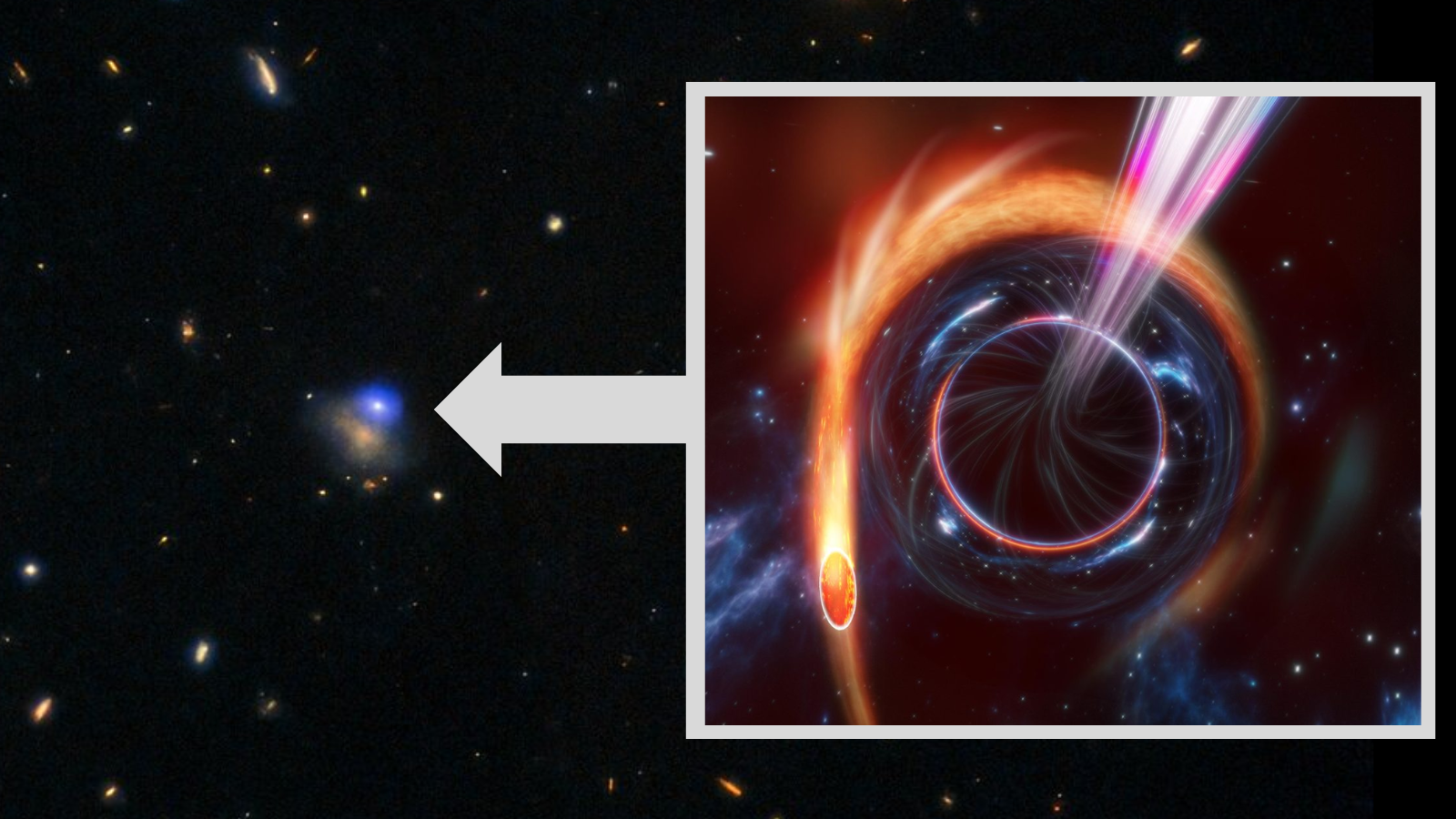Why Is Uranus on Its Side? Incredible Simulations Could Solve the Mystery.
Solar systems are messy places, but the tools astronomers use to understand these systems can re-create that chaos with surprising beauty.
Consider giant impacts, which scientists believe are responsible for our moon, Saturn's rings and Uranus' strange sideways alignment. But scientists have never gotten to see such a giant impact firsthand, and of course they can't replicate the process at a realistic scale. So, they turn to computer simulations like this one, and as computer technology continues to improve, those models can become ever more detailed.
"It's almost like having a brand-new telescope in the way that it reveals all sorts of new details and exciting topics that we could never study before," Jacob Kegerreis, a doctoral student at Durham University in the U.K., wrote to Space.com in an email. He presented the simulations for a giant impact with Uranus last month at the annual conference of the American Geophysical Union. [Photos of Uranus, the Tilted Giant Planet]
Scientists are looking for an impact at the system because Uranus is tilted strangely on its side, with all its moons following at the same steep angle. Kegerreis is part of a project using a technique called smoothed particle hydrodynamics, a specialized technique that allows for better representation of fluids and gases in simulations. He and his colleagues used the approach to simulate what would happen in a wide range of Uranus collision scenarios.
Using the simulations, the team could evaluate the different results given original objects of different sizes colliding at different speeds and angles; the simulations also show how much ejecta an impact creates and how well the planet's atmosphere endures the event. Because the approach can model 1,000 times more particles than previous simulations, Kegerreis said, they're more-accurate representations of how a specific collision would play out.
But science aside, the simulations are also simply entrancing.
Email Meghan Bartels at mbartels@space.com or follow her @meghanbartels. Follow us @Spacedotcom and Facebook. Original article on Space.com.
Breaking space news, the latest updates on rocket launches, skywatching events and more!

Meghan is a senior writer at Space.com and has more than five years' experience as a science journalist based in New York City. She joined Space.com in July 2018, with previous writing published in outlets including Newsweek and Audubon. Meghan earned an MA in science journalism from New York University and a BA in classics from Georgetown University, and in her free time she enjoys reading and visiting museums. Follow her on Twitter at @meghanbartels.


